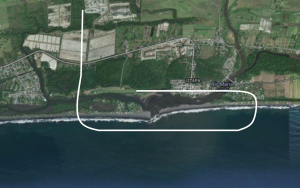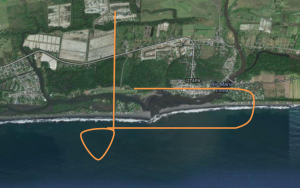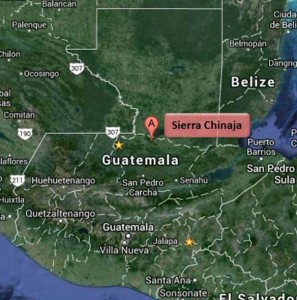Iztapa is a popular destination for members of the Aeroclub. On week-ends you will have the runway on your own most of the times and on normal week-ends you might find one other pilot in the pattern. Iztapa is usually far from being crowded but there are days and hours where it can get just a little bit busier than that. Not long ago, we were 4 single engine airplanes, an ultralight and an experimental somewhere on the runway, in the pattern or arriving. This was not for the Iztapa airshow by the way, just an ordinary Sunday morning. Additional complexity arises from training flights making full stop landings on runway 27 and taking off from 09 (against the traffic flow). Communication that day wasn’t perfect so I made a note to myself to read up on procedures and communication best practices for un-towered airports such as Iztapa.
Let’s start with the traffic pattern and how to enter it. When coming from the North I would usually fly over the field at threshold of runway 09 and then turn left over the Pacific to join the left downwind for runway 27. Iztapa uses the standard left-turning traffic pattern. Therefore it’s all left turns to left base and then to final to 27.

I believe that approach is acceptable. Although I remember from a flight with an instructor in the US that he recommended to overfly the runway mid-field 1000 ft above pattern altitude, then tear drop to join the downwind leg.

I will try this by-the-book approach next time around and see if it provides benefits when it comes to visibility of other planes in the pattern etc.
In the early morning, calm conditions usually prevail in Iztapa. A full stop landing on 27 with a subsequent takeoff from 09 is common practice. I can’t see anything wrong with that and I have done it myself many times. I would probably discontinue full-stop landings and switch to touch and gos if more planes stay in the pattern. Now taking off from runway 09 while others are in the pattern for 27 is a little different. I strongly believe that in this case you should not make a right turn after takeoff (which happened that day). I would compare that with driving into a one-way street with your warning lights one, just that airplanes don’t have warning lights. The normal procedure is a 45° left turn after takeoff before joining the heading to your destination. Even if you want to teardrop back to make another landing I would recommend a 45° left-turn after takeoff before turning back right and joining final.
I have never seen anyone arriving from the south (would be interesting). Eastern and western arrivals are common. East can be flown direct, although I personally prefer fly upwind, then cross the runway to left downwind. That allows me to get a glimpse on the runway. When coming from San Jose, joining left downwind directly is fine.
Now let’s talk about communications. San Jose radio request to switch frequency with Iztapa at sight. Upon arrival everyone should report rough situation in respect to the runway. Personally I don’t think call signs add value. I would just call out the type of plane which gives others a feel for speed. All this together I would do the call like this.
“Iztapa trafico, Cessna Centurion, 5 millas norte, 2000 pies, para un aterizaje 27, voy a sobrevolar la pista para incorporarme con el viento izquierda 27”
The FAA recommends calling out the traffic name at the end also. The reason is potentially overlapping frequencies. It is safe to say that that shouldn’t be a problem in Iztapa, it doesn’t hurt either. For you to decide.
From there you should report every time you are turning within the pattern. The reason is that turning planes can be spotted much easier.
“Iztapa trafico, Cessna Centurion, incorporandome con el viento izquierda 27”
“Iztapa trafico, Cessna Centurion, virando base izquierda 27”
“Iztapa trafico, Cessna Centurion, virando final 27”
“Iztapa trafico, Cessna Centurion, dejando pista libre”
That last one is a courtesy to the plane coming after you. If he knows that you are off the runway, he can concentrate on the landing and doesn’t have to check if you have cleared the runway yet.
If all pilots would follow the above guidelines, Iztapa would be a piece of cake even at those rare busy days. And I am fine with ordering your “100 Dollar Desayuno Chapin” on days where the frequency and the area is less crowded.
Please share your views!!




